From textured berber to veggie burgers: new uses for Devon’s old Woolworths
With another shop-spotting visit to Devon scheduled for later this month, now seems like an opportune time to share the ex-Woolies photos that I took during my last trip to the county, back in September.
I blogged about the Sidmouth store (#729; now M&Co) last month, while the Tiverton ex-Woolies at 18 Fore Street (#404) popped up before in the context of discussing its subsequent occupants, Poundstretcher and, before that, Alworths. Opened as Woolworths on 8 August 1930, the Tiverton store features a version of the distinctive five-bay symmetrical frontage that I’ve discussed so many times before.
Perhaps uniquely for an ex-Woolworths, my photo captures visible evidence of all three of the building’s incarnations: the current Poundstretcher signage, obviously; the recognisable Woolworths shopfront, which has been retained; and a remnant of purple window dressing from the shop’s eight-month stint as Alworths.
A store with a bit less good fortune post-Woolies is the one at The Square in Seaton (#907; opened 30 September 1955), which remained empty at the time of my visit following a fairly brief stint as Carpetright. Like in Tiverton, I was able to snap evidence of both occupiers: the remnants of the Woolworths signage, uncovered again once Carpetright’s sign was taken down; and the remains of Carpetright’s own window vinyls. As with many small-town Woolworths opened in the ’50s, Seaton’s store took over a pre-existing building rather than one that was custom-built for the chain.
Carpetright has taken over quite a few ex-Woolies sites, and the chain’s boss, Lord Harris, recently reaffirmed his commitment to opening more high-street stores alongside the retailer’s traditional retail-park locations. A prime position near the seafront in Seaton always seemed a strange choice, however – more suitable for selling buckets and spades than vinyl and laminate.
I can’t find anything about what has become of the property since my visit, though it still features – rather oddly – in the store finder on the Carpetright website. So, either the company website is out of date, or the store has reopened after previously closing down.
A seaside ex-Woolies with no such problems is the one in Exmouth (#510), which was snapped up by Iceland – along with 50 other stores, like Monmouth – within days of Woolworths’ closure. Opened on 28 July 1933, its present appearance stems from a 1960 modernisation, giving it a look very similar to some of Woolworths’ 1950s new-build stores.
A store with an even more modern look is the one in Honiton’s Lace Walk shopping centre (#1225), which only opened in about 2000. It, like Exmouth’s store, was an early acquisition by Iceland in January 2009.
As often happens, I only realised after my visit that Honiton had had another Woolworths store in the past: store #876, which would point to an opening date of about April 1955. It was housed in the Pannier Market, an historic building at 115 High Street, which was built in about 1850 and once housed an ornate assembly room upstairs and a produce and livestock market on the ground floor. Though I missed getting a proper photograph (for now), the original store at least shows up in one of my general street shots, below.
Still trading at the time of Woolworths’ 1972 stores list, the Pannier Market store seems to have closed in about 1976, Woolies apparently “pulling out of the town when it opened a store in the then newly-built Guildhall Shopping Centre, in Exeter”. Woolworths’ later return, to Lace Walk, was seemingly an acknowledgement that “Honiton was a shopping centre in its own right and not, as predicted, a mere dormitory town for Exeter”. Meanwhile, the Pannier Market has subsequently hosted businesses including G&H Interiors (from 1985), and, today, a branch of Peter Betteridge The Bed Expert.
As it happens, the aforementioned Guildhall Shopping store in Exeter (#151) is another one that I was able to work into my visit. Following Woolworths’ collapse, the premises were taken over by the expanding hardware chain Wilkinson, which has benefited from Woolies’ demise to expand its South-West footprint from a low base. Of its seven stores in Devon and Cornwall, the Barnstaple shop at Green Lanes is also a former Woolworths unit.
Opened on 7 October 1976, the Guildhall Woolworths was not, however, the first incarnation of store #151 – in fact, 151 in Exeter is one of few ex-Woolies to have traded from three different sites.
The first, opened on 1 December 1923, was in leased premises in a location that I’m yet to identify, while the second – operating from 7 October 1933 until 31 January 1976 – was in a purpose-built property at 190-191 High Street. Today, it is divided between McDonald’s and an empty unit (at least at the time of my visit) that formerly housed the collapsed music retailer Fopp.
As in Honiton, I only discovered the existence of yet another former Exeter Woolworths after I’d been and gone. That store – #838 – opened in leased premises at 35 Sidwell Street in about October 1954, but appears to have closed sometime in the 1970s or 80s. Today – going back to the subject that kicked off this particular blog post – the address houses a branch of Poundstretcher.
With John Lewis’s Exeter store – the first in its new ‘flexible format’ – set to open further along Sidwell Street this autumn, that might be just the excuse I need to pay a return visit.

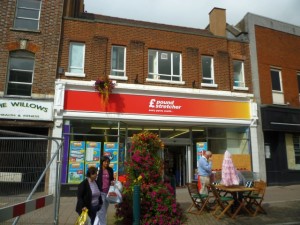
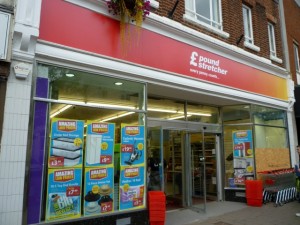




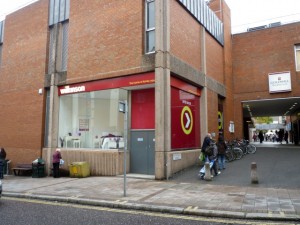
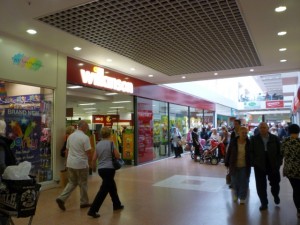

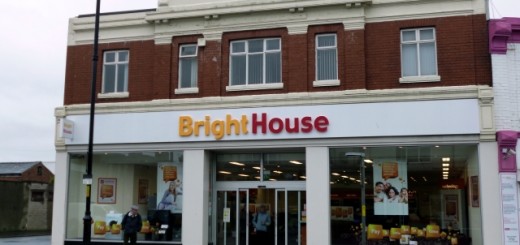
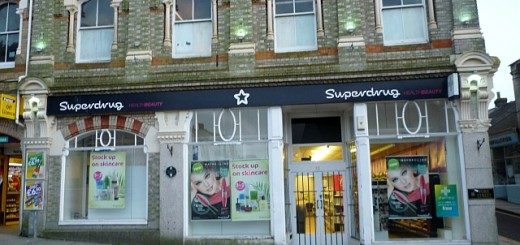




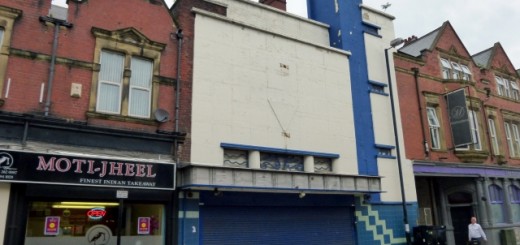

Carpetright have reoccupied the former Woolworths in Seaton again. It was certainly trading as Carpetright when I was in Seaton last week!
Thanks Keith – most odd!